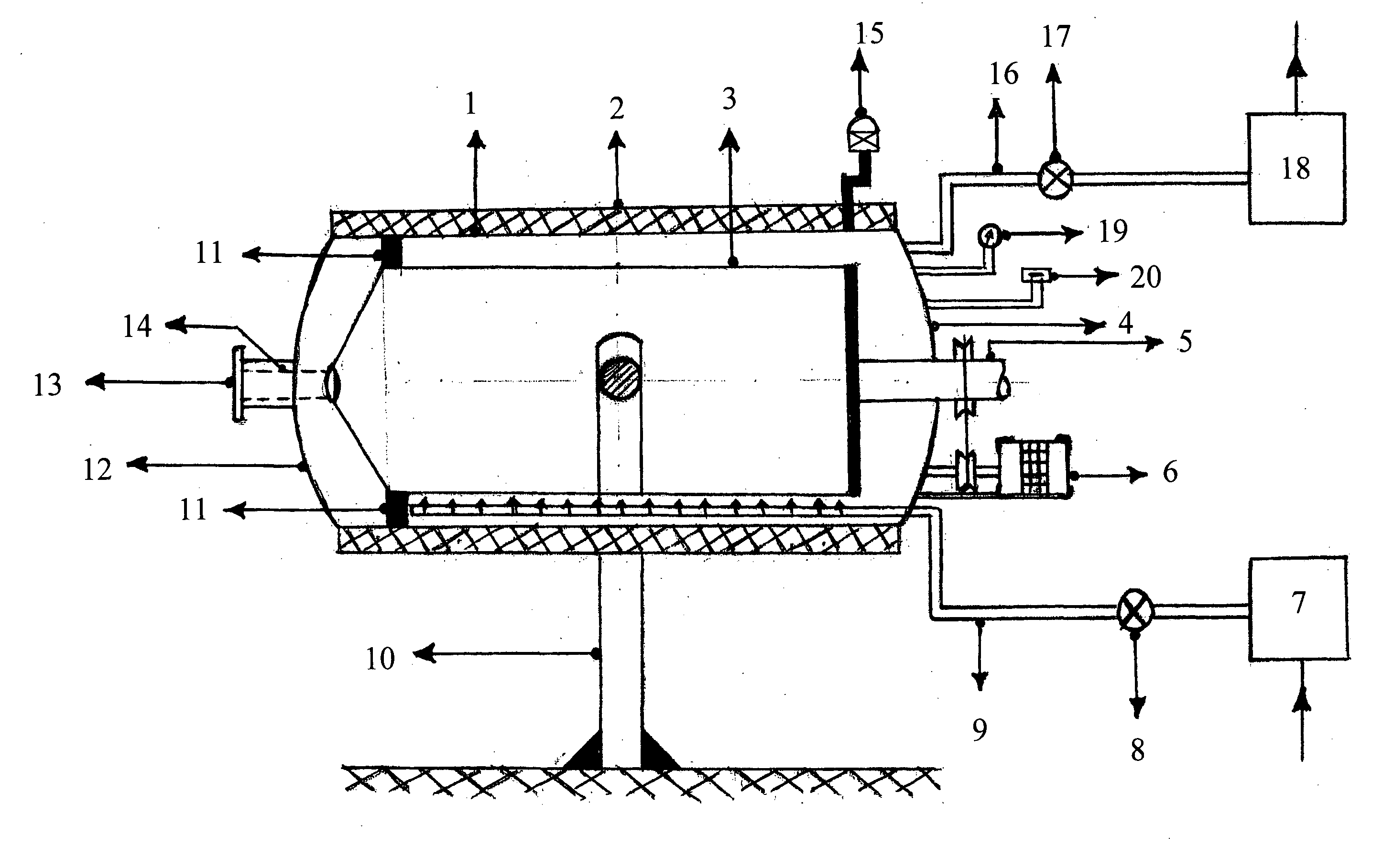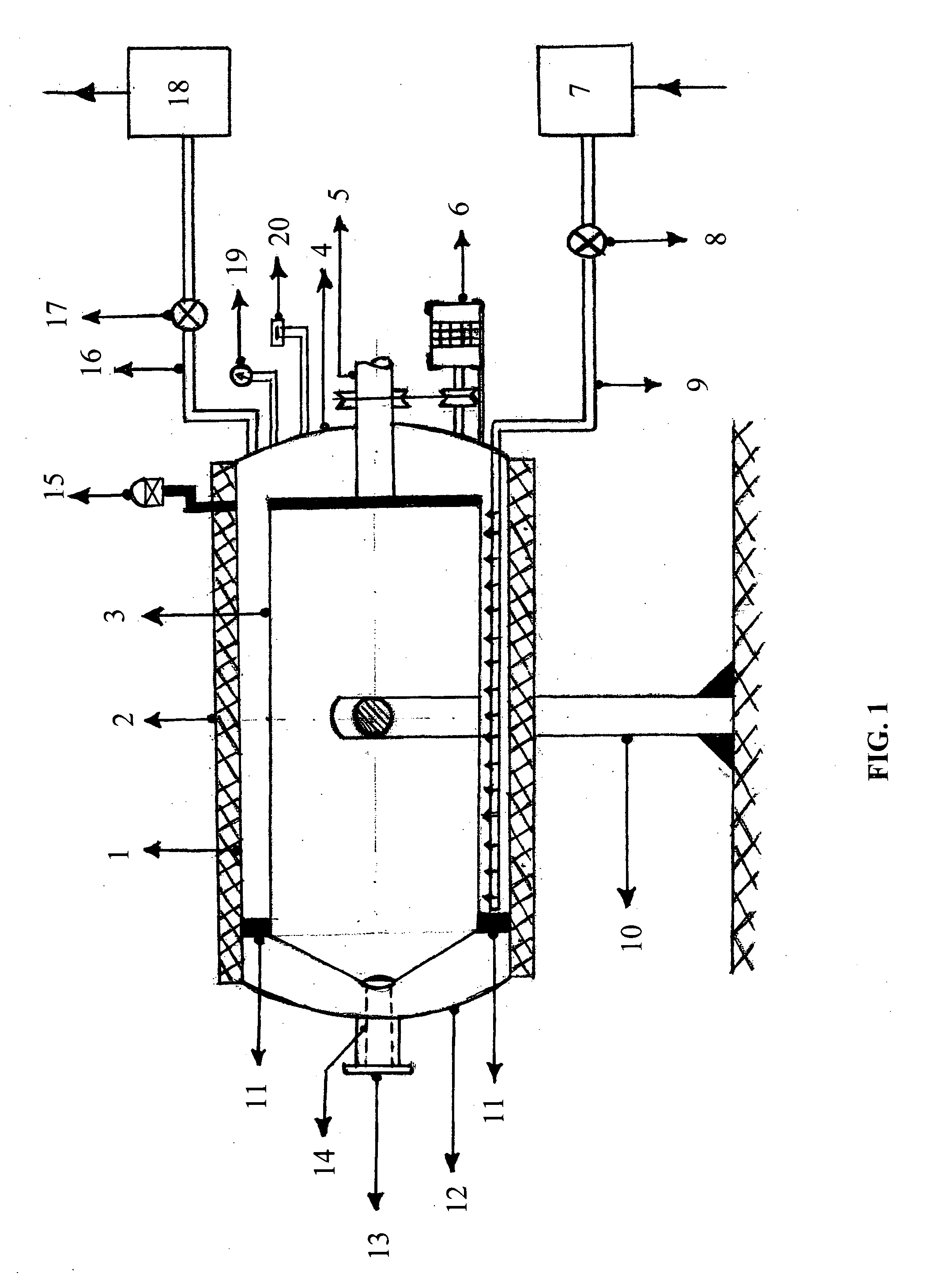Process and an apparatus for converting solid organic materials into carbon or activated carbon
a technology of solid organic materials and process equipment, applied in the direction of measurement apparatus housings, inorganic chemistry, calcination, etc., can solve the problems of difficult control of process, inability to automate the type of carbonization process, raw materials, etc., to facilitate quick and easy feeding, facilitate feeding or removal, and high temperature and pressure
- Summary
- Abstract
- Description
- Claims
- Application Information
AI Technical Summary
Benefits of technology
Problems solved by technology
Method used
Image
Examples
Embodiment Construction
[0044]Referring to FIG. 1, to prevent heat loss, thermal insulation with protective cladding 2 is provided on the outer wall of the pressure vessel 1. Before feeding of the solid organic materials, the whole pressure vessel 1 along with its accessories supported on a tilting or swivel support 10 is tilted upwards in the range of 30° angle to 60° angle from its horizontal position at 180° angle. From the open or close door end of the pressure vessel 12, the solid organic materials is fed through the feeding or removal port 13 via the connecting chute 14 into the perforated rotary drum 3 encased inside the pressure vessel 1. During feeding of the solid organic materials, the rotation of the perforated rotary drum 3 is maintained at a specified RPM so as to facilitate uniform feed of the solid organic materials throughout the length of the perforated rotary drum 3. Rotation of the perforated rotary drum 3 is by geared motor with belt or chain drive 6 coupled to the rotating shaft 5. Th...
PUM
| Property | Measurement | Unit |
|---|---|---|
| Temperature | aaaaa | aaaaa |
| Temperature | aaaaa | aaaaa |
| Temperature | aaaaa | aaaaa |
Abstract
Description
Claims
Application Information
 Login to View More
Login to View More - R&D
- Intellectual Property
- Life Sciences
- Materials
- Tech Scout
- Unparalleled Data Quality
- Higher Quality Content
- 60% Fewer Hallucinations
Browse by: Latest US Patents, China's latest patents, Technical Efficacy Thesaurus, Application Domain, Technology Topic, Popular Technical Reports.
© 2025 PatSnap. All rights reserved.Legal|Privacy policy|Modern Slavery Act Transparency Statement|Sitemap|About US| Contact US: help@patsnap.com



